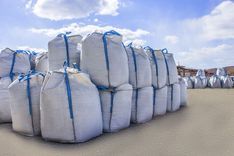Efflorescence is a persistent challenge in the Indian construction landscape. It affects not just aesthetics but also structural longevity. For MSMEs working on mid- to large-scale building projects, understanding and preventing efflorescence is critical for maintaining workmanship, brand reputation, and customer satisfaction. This white crystalline deposit, often seen on plastered walls and concrete surfaces, is a sign of water intrusion and underlying chemical activity. Though it may appear superficial, its causes and consequences run deeper, affecting the long-term performance of structures.
What is efflorescence?
Efflorescence is the crystalline deposit of water-soluble salts that appear on the surface of concrete, brick, plaster, or stone as a white or greyish film. It is formed when moisture migrates through masonry or cement-based materials, dissolving naturally occurring salts such as calcium hydroxide. When the moisture reaches the surface and evaporates, it leaves behind these salts in powdery form.
There are two types of efflorescence—primary and secondary. Primary efflorescence occurs soon after construction, often during the curing stage. Secondary efflorescence arises when structures are exposed to excess moisture over time, especially due to water ingress, poor waterproofing, or drainage failures.
Why efflorescence matters for MSMEs
Efflorescence, though not always structurally harmful in its early stages, is a red flag for moisture control issues. In plastered walls, it compromises the adhesion of paint, leading to peeling, blistering, and aesthetic damage. In concrete surfaces, recurring efflorescence may lead to cracking and surface delamination. For MSMEs, this can mean expensive rework, dissatisfied clients, and potential warranty claims.
More importantly, efflorescence is an indicator of poor material selection, workmanship, or environmental control—areas MSMEs must prioritise for long-term competitiveness.
Causes of efflorescence
Presence of water-soluble salts
Most cement, sand, bricks, and aggregates naturally contain trace amounts of chlorides, sulphates, and nitrates. These become soluble in water and rise to the surface.
Excessive water ingress
Capillary rise from the ground, leaking pipes, rainwater penetration, or insufficient damp-proofing create pathways for moisture movement.
Improper mix proportions
High water–cement ratio and poor sand grading facilitate moisture retention in plaster and concrete mixes.
Insufficient curing
Rapid drying or incomplete hydration traps unreacted lime in concrete, which later migrates as moisture dissolves it.
Poor workmanship
Gaps in joints, unfilled mortar beds, and unprotected curing increase susceptibility to water ingress and salt transport.
Chemical process behind efflorescence
In cementitious materials, calcium hydroxide [Ca(OH)₂] is formed as a hydration by-product. When water seeps through concrete or plaster, it dissolves this compound. The solution migrates to the surface and reacts with atmospheric carbon dioxide (CO₂) to form calcium carbonate (CaCO₃), visible as a whitish powder. This reaction is commonly known as carbonation:
Ca(OH)₂ + CO₂ → CaCO₃ + H₂O
Other salts such as magnesium sulphate, sodium nitrate, or potassium chloride also contribute, depending on local material sources.
Signs and symptoms
White or greyish streaks or powder on surfaces
Blistering or peeling paint on plastered walls
Dampness, discolouration, or mould near effloresced zones
Powdery deposits that reappear after cleaning
Efflorescence is often most visible during dry seasons, after monsoon moisture has evaporated, leaving salt residues.
Prevention strategies during design and construction
Use low-alkali cement
Select cement types with low soluble alkali content, such as Portland Pozzolana Cement (PPC) or Portland Slag Cement (PSC), which reduce efflorescence risk.
Test materials for salt content
Ensure that sand and aggregates meet IS 383 standards, particularly for permissible chloride and sulphate limits. Avoid using marine sand or recycled materials without thorough washing.
Control water–cement ratio
Maintain optimal water–cement ratios (0.40–0.50 for concrete, 0.60–0.65 for plaster) to reduce porosity and permeability.
Design adequate slopes and drainage
Ensure that horizontal surfaces like ledges, balconies, and window sills are sloped away from the building. Use drip mouldings to prevent water accumulation.
Incorporate water repellents and admixtures
Add integral waterproofing compounds such as calcium stearate or acrylic polymers to concrete and plaster to reduce permeability.
Apply damp-proof courses (DPC)
Lay proper DPCs at plinth levels, window sills, and between masonry courses to stop upward moisture movement.
Cure thoroughly
Cure concrete and plaster for a minimum of 7–14 days using wet hessian cloth or water sprinkling. Avoid premature drying, especially in hot or windy climates.
Surface protection and coating strategies
Apply anti-efflorescence primers
Use alkali-resistant primers or sealers before painting. These create a barrier against salt migration.
Use breathable, water-resistant paints
Choose exterior emulsions or silicone-based coatings that allow vapour transmission while resisting liquid water.
Install expansion joints and sealants
Joints allow for movement without cracks and prevent water from entering plaster or masonry voids.
Keep surfaces clean during construction
Prevent cement spills, lime leachate or improper mortar wash from contaminating surfaces during construction.
Remedial actions for existing efflorescence
Dry brushing
Use a stiff, dry brush to remove loose powder. Do not use water, as it can re-dissolve salts and redistribute them.
Mild acid cleaning
For stubborn stains, use a 5–10% solution of diluted hydrochloric acid, followed by neutralisation and rinsing. Use with care and protective equipment.
Surface washing with vinegar or baking soda
These household solutions can work for light surface efflorescence, particularly indoors.
Repainting with barrier primers
After cleaning and drying the wall, apply a barrier primer followed by fresh paint or finish.
Injection grouting
For severe cases involving cracks and water ingress, use injection grouting to fill voids and prevent further migration.
Waterproofing membranes
Apply elastomeric coatings or sheet membranes to affected zones to permanently block moisture pathways.
Cost implications of ignoring efflorescence
While superficial removal costs may be minor, untreated efflorescence often indicates deeper issues like water ingress, poor sealing, or structural porosity. Studies show that moisture-related damage accounts for over 40% of post-handover maintenance costs in Indian residential projects. For MSMEs operating on tight margins, efflorescence can erode profit margins through rework, reputation loss, and client dissatisfaction.
Role of climate and regional factors
Regions with high humidity, saline soil, or seasonal monsoons are particularly prone to efflorescence. Coastal cities like Chennai, Kochi and Mumbai face higher risks due to air-borne chlorides and groundwater salinity. In these areas, using PSC cement and robust water barriers is critical.
Efflorescence vs other white deposits
Not all white deposits are efflorescence. MSMEs must distinguish:
Efflorescence - Powdery, water-soluble, disappears with brushing
Lime bloom - Similar to efflorescence but arises from curing reactions
Mould/fungi - Grows in moist areas, has odour, requires biocidal treatment
Calcium silicate hydrate (C-S-H): Non-soluble, embedded in cured cement matrix
Proper diagnosis is key to effective treatment and avoiding unnecessary expenses.
Regulatory guidance and IS standards
IS 456 (Plain and Reinforced Concrete – Code of Practice) advises moisture control during mixing and curing. IS 2645 and IS 383 specify acceptable salt content in materials. IS 9103 guides the use of admixtures for waterproofing. IS 2395 details surface preparation and painting standards to resist moisture penetration.
Technological solutions and innovations
Hydrophobic Nano coatings
These transparent, breathable coatings repel water while allowing vapour diffusion, preventing salt transport.
Self-healing concrete
Incorporating bacterial or microencapsulated agents that seal cracks and block moisture can reduce efflorescence potential.
Smart curing blankets
Thermal-sensitive blankets that retain humidity and reduce temperature gradients during curing improve strength and reduce micro cracks.
Moisture sensors
Embedded or external sensors can help MSMEs monitor moisture levels during the curing process or after completion.
Conclusion
Efflorescence is more than a cosmetic nuisance. It is a sign of deeper moisture-related issues that can compromise durability and aesthetics. For MSMEs, prevention starts with material selection, mix design, and sound construction practices. Surface treatments, chemical admixtures, proper curing, and awareness of regional risks can significantly reduce efflorescence. By integrating prevention strategies into their SOPs, MSMEs can save costs, uphold quality, and build client trust in competitive project environments.




 +91 7208055523
+91 7208055523
 Help & support
Help & support
